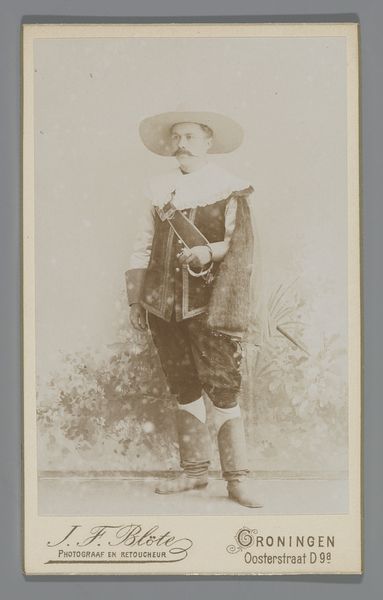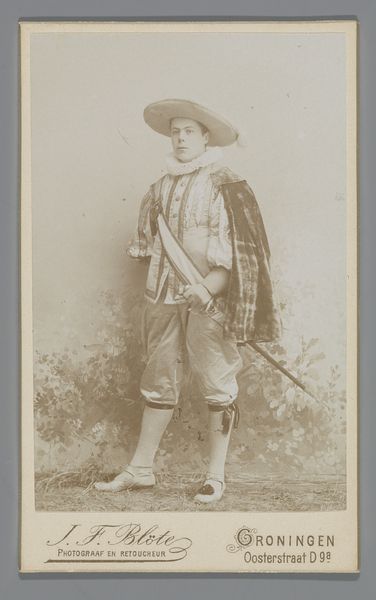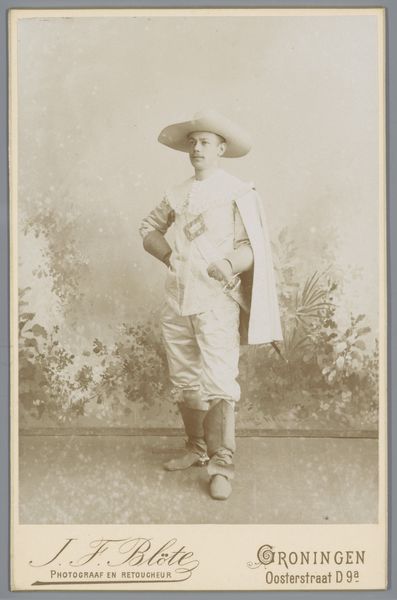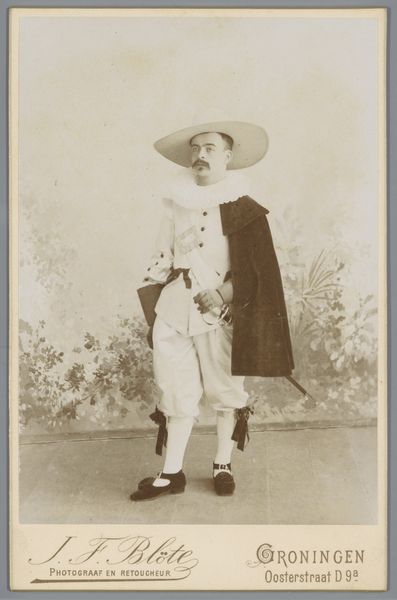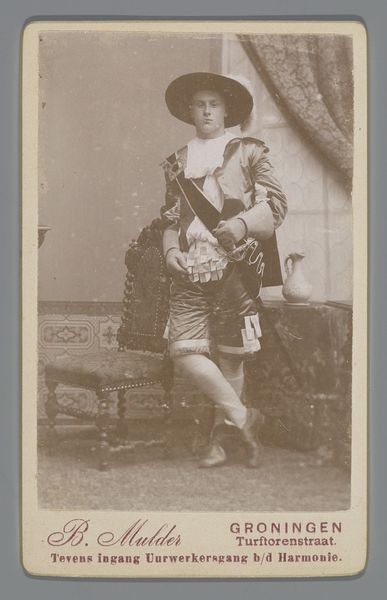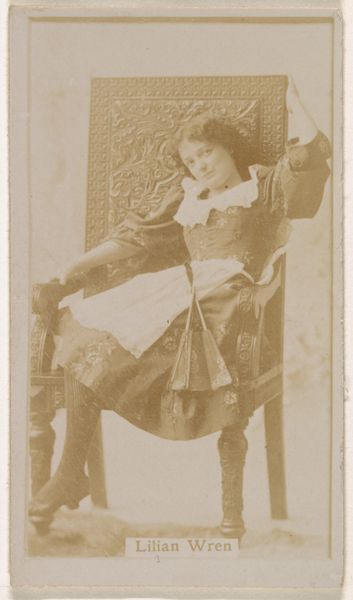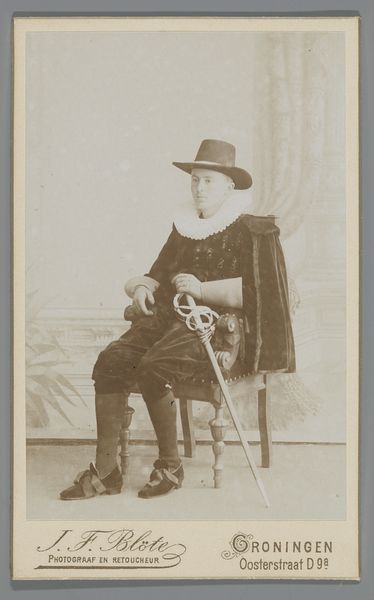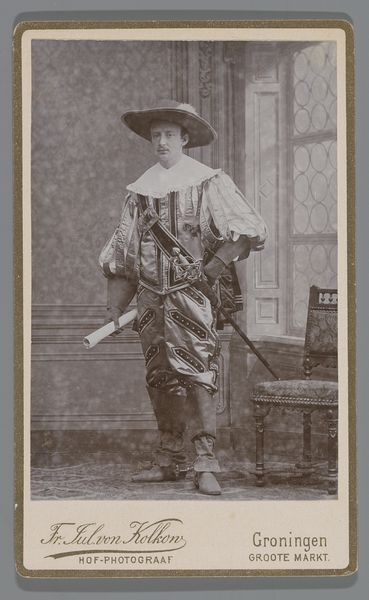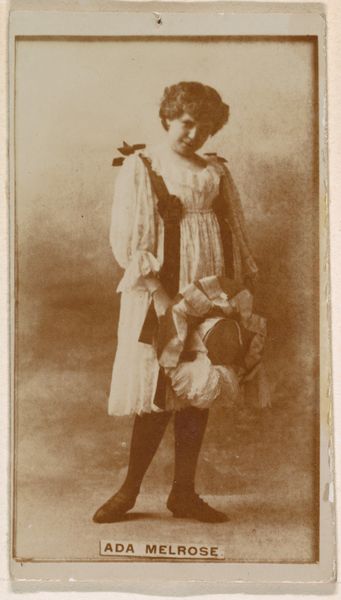
Dimensions: height 102 mm, width 62 mm, height 88 mm, width 58 mm
Copyright: Rijks Museum: Open Domain
Curator: Here we have an intriguing studio photograph titled "Portret van een onbekende Groningse student in maskeradekostuum," dating from around 1896 to 1900. The photographer was Jan Frederik Blöte. Editor: It has such a whimsical feel to it, yet simultaneously a staged and studied quality. It’s like a theatre student thoroughly enjoying dressing up, almost giddy. Curator: Exactly! The photograph captures a specific cultural moment. Masked balls and student societies were quite prevalent in Groningen at that time. The act of masquerading allowed individuals to temporarily escape societal norms, a performative rebellion, in a sense. Editor: Right. But what strikes me most is the quality of the clothing. The texture of the velvet and the meticulous construction are clearly shown here. This wasn't just any off-the-rack costume; someone put effort into crafting it, or having it crafted. The satin ribbon decorations on the shoes and the ornate details of the sword also imply wealth. Curator: The choice of photography itself speaks volumes. It provided a medium through which students could immortalize their participation in these events. But studio portraiture was also developing in that period, solidifying photography’s place in constructing self-image. The photographer here identifies himself as “Photograaf en Retoucheur,” reflecting the early manipulation practices used at the time. Editor: True! The surface itself, that sepia tone, it is what connects it to a specific period and technique. But also, the backdrop. It seems rather carelessly painted with simple brushstrokes that are not meant to resemble nature realistically. That contrast between that slightly clumsy staging, the quality of the costume and the focused portrayal of the character are remarkable to me. Curator: Well put. The contrast reveals both the manufactured nature of the spectacle and the very real social significance such events and their photographic records held. It highlights how young men, in their construction of public roles, also construct a shared history within student societies. Editor: Absolutely, a carefully crafted and preserved cultural artifact where both individual and community come together, through material means, into a beautiful, almost antiquated record. Curator: I agree. The picture provides a glimpse into a world where clothing, social engagement and photographic media interplayed to mold social identities and contribute to group history.
Comments
No comments
Be the first to comment and join the conversation on the ultimate creative platform.
